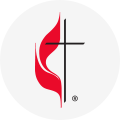Your estate is comprised of everything you own. While the size of everyone’s estate varies, there is one thing we all have in common: we can’t take it with us when we die. Making a plan for what will happen to your belongings and for the care of the people you leave behind may be an emotionally difficult task. But it is one way to say “I love you” to your family and provide peace to them during a difficult time in their lives.
Estate Plan Checklist
- Durable Power of Attorney: Permits others to handle most or all of your financial affairs in the event of incapacity or unavailability.
- Living Will: Allows you to specify your wishes concerning life-sustaining medical treatment.
- Health Care Power of Attorney (also called Health Care Proxy or Medical Power of Attorney): Appoints a designated person to make medical and healthcare decisions in the event of temporary or permanent incapacity.
- Guardians: If you have minor or special needs children, then their guardian is named in your will. If guardians are not named, then the court will appoint someone to take custody of them. This person may or may not be the person you would want to be caring for them.
- Trust Documents: A trust is a legal entity created to help manage and control the distribution of assets. The type of trust depends on the objective. For example, if both a husband and wife pass away simultaneously, then their minor children can be provided for by having the couple’s assets willed to a trust. Then the Trustee appointed by the couple in their wills manages and pays out the assets for the children’s care.
- Insurance Information: Consider a sufficient amount of life insurance that will replace your income for as long as needed so a surviving spouse or guardian can support your family. Keep policies and benefit amounts along with your estate planning documents.
- Beneficiary Designations: Pension and life insurance benefits require a beneficiary designation form. The elections made on the designation form supersedes any provision set in a will. Therefore, it is important to integrate your designations with the provisions in your will. Always update the beneficiary designation form at times of life changes such as births, deaths, marriages, or divorce.
- Last Will & Testament: The common legal document which names the executor who manages the estate. It specifies the disposition of property at death. In it guardians or personal representatives are appointed.
- Personal Message: While not a legally binding document, including a personal letter gives opportunity to explain your wishes, name specific items such as jewelry or collectibles to go to specific people, or leave a lasting message to your loved ones.
Other actions to consider:
- Do an annual review. Have your insurance policies changed? Did your beneficiaries change addresses or last names? Did you add or sell any of your estate assets? While it is not likely that you’ll need a whole new plan or even change your will, some of the additional documents listed above may need to be updated.
- Discuss your plan with your spouse and at least one other family member. This may be the most difficult step in making your estate plan. Telling others will make your intentions clear, provide your family with a sense of preparedness, and be an opportunity to pass on your values.
- Organize your estate plan. Having all these important documents organized in one accessible, understandable system will make the management of your affairs less burdensome on others.
- Other documents that you may keep organized in addition to your estate plan documents include: property deeds and titles, marriage and birth certificates, passports, and a master list of where all these documents can be located.
*Information sourced from EY Financial Planning Center. Participants in the Wespath pension plans can create an account and log in for more estate planning information.
